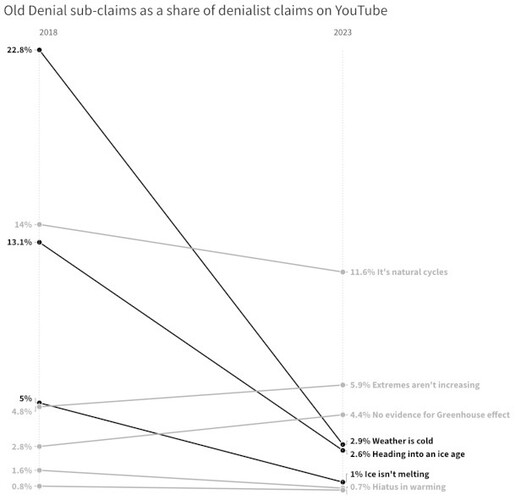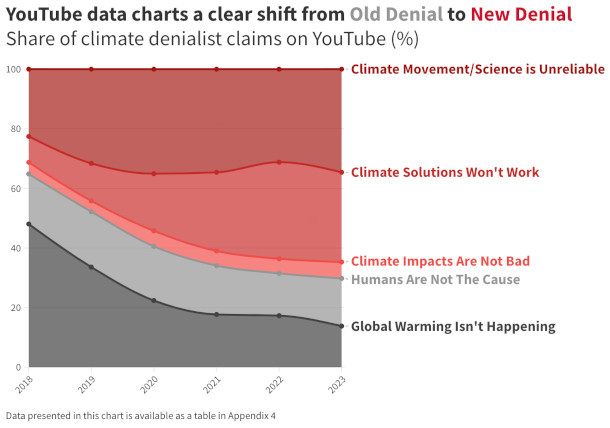The lack of belief in research on man-made climate change is nothing new. But in a major study, scientists have found that the attitudes of former climate change deniers have changed dramatically. Imran Ahmed is the CEO and founder of the Center for Countering Digital Hate.
Working with a team of university researchers, he used an AI model to study the evolution of climate denial claims on YouTube between 2018 and 2023. The results of the study show that there has been a sharp decline in the number of claims that climate change is not happening or is the result of human activity.
Is climate change harmless?
Instead, the researchers found an increase in claims that climate change is happening, but that the solutions to mitigate its effects are not working and that there is nothing more that can be done to reduce the "fever" of the Earth.
Scientists, journalists, politicians, communicators have persuaded and explained to the public and young people that climate change is real. But the opponents of action on climate change have opened a new front.
- Imran Ahmed
Other new views are that the effects of global warming will be positive or harmless, that new technologies will be too expensive or unsafe, or that climate science and the climate movement are not to be trusted. The assumption that solar power, wind power or a switch to electric vehicles would not be significant contributors to climate change mitigation is also on the rise.
This new form of denial is mainly spread through YouTube videos, where both the climate deniers and the platform are often the beneficiaries of advertising revenue. According to Imran Ahmed, who has spent many years researching conspiracy theories and the spread of disinformation, these are essentially dangerous lies.
Doomerism and passive resignation
Claims such as the ones mentioned above are dangerous because, as they spread through social media, they can contribute to people quickly losing hope in a better future and becoming demotivated in their desire to make things better.
There is a cynical trend, often referred to as 'doomerism', where many live by the motto that it is too late to make a difference anyway. This can have a paralysing effect and discourage people from getting involved in climate action.
According to Imran Ahmed, in order to spread disinformation and profit financially from it, Youtubers pull out all the stops. For example, they try to create an academic appearance by including supposed "experts", showing (unrepresentative) graphs and even dressing up like stereotypical conservative scientists.
Big profits for Youtubers and the platform
It is a highly developed industry, which skilfully mixes the truth with misinformation, so much so that it takes a lot of time and expertise to debunk it. Ironically, the reach of such channels is also increased by comments from dissenting voices. After all, every interaction counts. And engagement is boosted by controversial topics.
YouTube makes millions of dollars from the placement of ads on channels like these. The 12,000 videos from 100 channels analysed in the study are worth an estimated $13.4 million a year. The profit is split roughly 55:45 or 60:40 between the content creator and the platform:
So both of them are profiting lavishly from this kind of content. What we will find, though, is that there'll be other channels around as well. So actually, these numbers are a very, very small estimate of the channels we looked at. We could be talking about $100, $200 million industry in total.
- Imran Ahmed
All of the above information has been extracted from an interview with Imran Ahmed, Executive Director and Founder of the Centre for Countering Digital Hate. Living On Earth has published the full interview.
Sources
Living On Earth | teaser image: DALL-E / AI



















